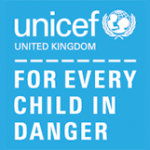 In 1946, Unicef was founded to meet the emergency needs of children in post-war Europe, China and the Middle East. Soon, we were feeding 5 million children in 12 countries.
In 1946, Unicef was founded to meet the emergency needs of children in post-war Europe, China and the Middle East. Soon, we were feeding 5 million children in 12 countries.
In 1950 our task was broadened to address the long-term needs of children everywhere. In 1965 we received the Nobel Peace Prize for our work in “liberating hundreds of millions of children from ignorance, disease, malnutrition and starvation.
In the 1970s, we pioneered training volunteers in local communities to help meet children’s basic needs.
In the 1980’s we led the child survival revolution that focused on preventing the deaths of some 15 million children each year from easily preventable illnesses such as measles or diarrhoea.
In 1989, governments worldwide promised all children the same rights by adopting the UN Convention on the rights of the Child. The Convention is the basis for all of Unicef’s work.
In the 1990’s, with the collapse of the Soviet bloc, Unicef again found itself protecting children affected by poverty, disease and war in Europe.
In the 21st century, we continue to help protect children in danger and transform their lives. Whether it is natural disaster, war or poverty, Unicef works tirelessly to keep every child safe.
- Unicef vaccinate 40% of the worlds children – 3 billion vaccines annually
- Unicef work in more than 190 countries
- Unicef is the world’s leading children’s organisation, ensuring more children are fed, vaccinated,educated and protected than any other organisation.
- In 2014, Unicef responded to 294 humanitarian situations in 98 countries to help keep children and their families safe. When an emergency strikes, Unicef is on the ground to provide clean water, medicines and protection to children in danger
- Unicef provides 80 per cent of the world’s life-saving emergency food
Right now, children are in danger.
Unicef will do whatever it takes, until every child is safe.
Will you help us?
